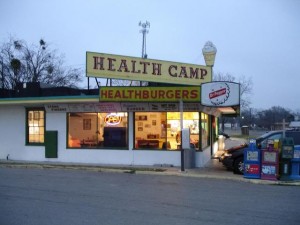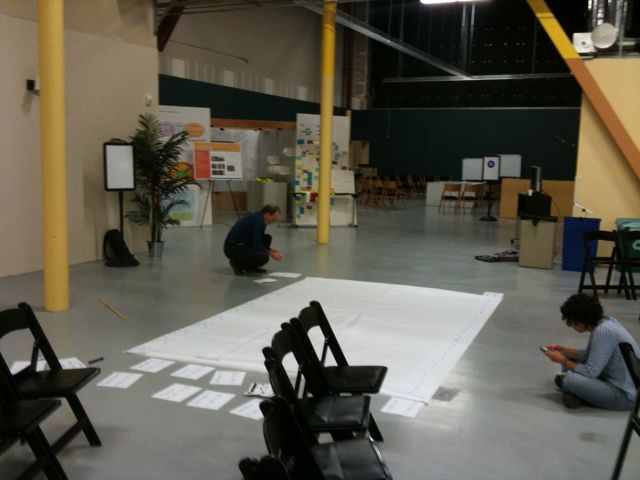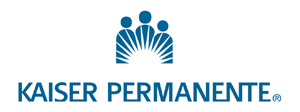 If you want to witness the power of innovation, I recommend you check out a user-generated or Open Space unconference. I recently attended my first – HealthCamp San Diego – and can attest that something magical happens when you get health care giants in the same room as entrepreneurs, innovators, technology experts, doctors, nurses and patients. From the first minute, titles were discarded and we became a room full of bright, energetic people freely collaborating. Our diverse backgrounds enhanced the conversations and were an impetus for innovation.
If you want to witness the power of innovation, I recommend you check out a user-generated or Open Space unconference. I recently attended my first – HealthCamp San Diego – and can attest that something magical happens when you get health care giants in the same room as entrepreneurs, innovators, technology experts, doctors, nurses and patients. From the first minute, titles were discarded and we became a room full of bright, energetic people freely collaborating. Our diverse backgrounds enhanced the conversations and were an impetus for innovation.
An “unconference” breaks out of the traditional, planned-months-in-advance trade shows and conferences to which many of us, especially in medicine, are accustomed. There is no agenda, no product booths and few PowerPoint presentations. Relying heavily on social media tools, the unconference format is designed to foster true networking, peer-to-peer learning, collaboration and creativity. Much of the HealthCamp content is focused on how social media, open source and the best of the Internet can enable better health outcomes, such as better care, increased access or reduced cost.
Last week’s HealthCamp San Diego unconference, held in coordination with the mHealth Networking Conference , was sponsored by my employer, Kaiser Permanente, as well as Health 2.0, Gary and Mary West Wireless Health Institute, San Diego Pacific Oncology and Hematology Associates, Presidiohealth,TBD Consulting, and Kony Solutions.
The unconference format solicits session and presentation suggestions in advance. A wiki dedicated to shaping the day showed speakers from the Scripps Health, Department of Veterans’ Affairs, and University of California San Diego proposing a range of on topics including mobile health, process innovations, and healthcare in social media that will shape the future of the health care industry. As a San Diego-based physician fascinated with the ways that the Web can enhance doctor-patient communication and improve care, one of the most exciting aspects for me was to see health leaders from Sharp Healthcare, Scripps Health, UCSD, and Kaiser Permanente in the same room for the first time, spending the day discussing future of health care and health care innovation.
Initially I was skeptical: without an agenda, I didn’t know how I was going to fill eight hours. Yet as the topic board (the on-the-fly agenda of participant-led discussions) developed, I realized there were more good sessions than time to see. The health care industry, because it is heavily regulated and can touch on sensitive personal health information, has been slower to adopt Web 2.0 tools than other industries. But bringing technology, innovation and care experts together in this format sparked hundreds of conversations including how physicians can use Facebook, how cloud computing and open source will impact mobile health, and how cool tech apps can turn your phone into a microscope or remind you to take your medication. Additionally, with all the bio and pharma companies in San Diego and powerful integrated care delivery systems here, there was enormous local talent present. I learned something valuable at each session and, because of the open format, made new connections at each.
At an unconference, you do not spend time studying the event center map trying to figure out the location of sessions for which you pre-registered months ago. Unconferences are meant to be free-flowing and allow you to move from group to group and follow your passion. I attended sessions on location-based social networking and protecting patient privacy online, and was amazed at how this organized chaos allowed people from all different backgrounds to connect on the specific topics that were of most interest to them – it was like online social networking, except in real life. I had coffee with a mobile device executive, connected with ER and oncology physicians, and had lunch with application developers from China. And because of the online content – live Twitter streams and links to online content – we were engaging and getting questions from around the US, and UK, and were able to ask them to the speakers and groups in the room for real-time feedback and collaboration. Our Twitter stream even made the #hcsd10 a trending topic in the region. It was an incredible way to spontaneously engage and innovate around the exciting topics we were discussing throughout the day.
Most gratifying is that out of this action-packed day, there is a still a commitment to metrics, results and follow-up. Every session leader and group will be delivering a report in the next three to four weeks after the event. Everyone there on that day and after the event is working together on plans and projects that will directly impact the future of health care for the next two to five years.
As Mike Kirkwood, one of the organizers of HealthCamp says, “The thing I love about HealthCamp is the reaction at the end of the day, when though leaders across industries report back that they have made progress on their idea, with new people, in a short amount of time. HealthCamp moves ideas into action – though rich dialog in a quick fashion.”
While walking to my last session, a CEO of an IT start-up stopped me to say how impressed he was at the innovation happening at Kaiser Permanente. Listening to him and to discussions from executives from cutting-edge industries, I was prouder than ever to be associated with an organization so committed to accelerating innovation in the health care industry and figuring out the best way to deliver patient-centric care. In fact, Kaiser Permanente is joining with Cisco and Sprint to sponsor another HealthCamp on October 6 in the San Francisco Bay Area. I look forward to collaborating in person and online with all of the participants and would encourage innovators across industries to jump at the next chance they have to attend and participate in an “unconference.”
Jeff Benabio, M.D., is a dermatologist with Kaiser Permanente in San Diego, and a social media and innovation junkie. He can be found on Twitter @dermdoc.
 We are happy to announce the beginning of a new planning season for HealthCamp SFBay! We have just locked down Friday, September 23, 2011 as our date and will again be hosting at the Garfield Health Care Innovation Center. We will continue to provide an open venue to explore and share new ideas in healthcare innovation. Please check back for more details!
We are happy to announce the beginning of a new planning season for HealthCamp SFBay! We have just locked down Friday, September 23, 2011 as our date and will again be hosting at the Garfield Health Care Innovation Center. We will continue to provide an open venue to explore and share new ideas in healthcare innovation. Please check back for more details!
 If you want to witness the power of innovation, I recommend you check out a user-generated or Open Space unconference. I recently attended my first –
If you want to witness the power of innovation, I recommend you check out a user-generated or Open Space unconference. I recently attended my first –  We encourage attendees to take public transportation to HealthCamp! To make this possible, we are offering FREE shuttles to and from the
We encourage attendees to take public transportation to HealthCamp! To make this possible, we are offering FREE shuttles to and from the 
